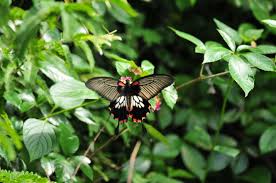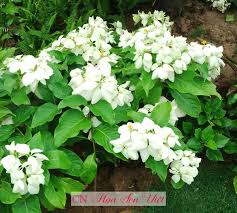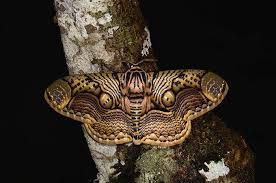Gà Hầm Sâm (Ginseng Chicken Soup): A Nourishing Traditional Dish

Gà hầm sâm, or Ginseng Chicken Soup, is a cherished dish in many Asian cultures, especially in Vietnam, Korea, and China. This comforting and nourishing soup is renowned for its health benefits, rich flavor, and ability to rejuvenate both the body and spirit. The dish features tender chicken slow-cooked with ginseng, a powerful herb known for its medicinal properties, creating a fragrant, savory, and health-boosting broth.
Gà hầm sâm is not only a favorite during the colder months but is also considered a vital part of traditional medicine. In this article, we will explore the origins of this dish, its health benefits, the ingredients used, and step-by-step instructions on how to make this hearty and wholesome soup. By the end, you’ll have everything you need to bring the nourishing goodness of Gà hầm sâm to your kitchen.
Origins and Cultural Significance of Gà Hầm Sâm
Gà hầm sâm has deep cultural roots in East Asia, particularly in Korea, where it is known as Samgyetang (삼계탕). The dish is often consumed during the hottest summer days, as it is believed to restore energy, improve vitality, and balance the body’s internal temperature. Traditionally, it is enjoyed as part of a health ritual to strengthen the immune system and combat the effects of heat.
In Vietnam, Gà hầm sâm has also become a popular dish for its reputed health benefits. The Vietnamese version typically features local ingredients, blending the distinctive flavors of the region with the medicinal qualities of ginseng. While the dish is enjoyed year-round, it is especially revered as a remedy for exhaustion, fatigue, and general weakness. The combination of chicken and ginseng offers a potent, nourishing effect that is said to improve overall health, boost energy levels, and restore balance to the body.
The preparation of Gà hầm sâm is a perfect example of the fusion of food and traditional medicine in many Asian cuisines. Ginseng has long been used for its adaptogenic properties, helping the body better cope with stress and promoting longevity. When combined with the rich flavor of chicken and aromatic herbs, Gà hầm sâm transforms into a nourishing dish that is as restorative as it is delicious.
Health Benefits of Gà Hầm Sâm
The primary ingredient in Gà hầm sâm—ginseng—has been celebrated for centuries for its remarkable health benefits. Together with chicken and other complementary herbs, this dish provides a range of health advantages that make it more than just a comforting meal. Some of the key health benefits of Gà hầm sâm include:
1. Boosts Immune Function
Ginseng is renowned for its ability to strengthen the immune system. It is believed to help the body fight off infections, prevent colds, and improve overall immune function. When combined with the protein and nutrients found in chicken, Gà hầm sâm becomes an excellent meal to help the body recover from illness and stay strong.
2. Increases Energy and Vitality
Ginseng is an adaptogen, meaning it helps the body adapt to stress and fatigue. Consuming Gà hầm sâm can provide a natural energy boost, increase stamina, and improve overall vitality. It is often consumed by those feeling run-down or recovering from illness, as it helps to replenish energy levels and support the body’s natural recovery processes.
3. Improves Digestion
Chicken is a source of lean protein that is easy to digest, making it an ideal base for a soup. The combination of tender chicken and the broth that is rich in collagen and gelatin supports digestive health by soothing the stomach and intestines. Additionally, the ginseng in the soup helps balance digestion by enhancing the absorption of nutrients.
4. Promotes Skin Health
The collagen in chicken, combined with the antioxidant properties of ginseng, supports healthy skin by promoting elasticity and hydration. The nutrients from the soup help regenerate skin cells, improve skin tone, and reduce the appearance of fine lines and wrinkles, making this dish beneficial for those looking to maintain youthful skin.
5. Enhances Mental Clarity
Ginseng has been shown to improve cognitive function, enhance memory, and increase mental clarity. Consuming Gà hầm sâm may help improve focus and concentration, making it a great choice for those needing mental rejuvenation.
6. Supports Cardiovascular Health
Chicken provides essential amino acids, which help maintain a healthy heart by reducing cholesterol levels and improving circulation. Meanwhile, ginseng has been shown to support cardiovascular health by improving blood circulation and reducing the risk of heart disease. Regular consumption of Gà hầm sâm may help improve heart health and reduce the risk of cardiovascular conditions.
Ingredients for Gà Hầm Sâm
To prepare this nourishing dish, you will need a few simple ingredients that come together to create a rich and flavorful broth. While some ingredients are essential, others can be customized based on personal preferences and availability.
Essential Ingredients:
- Whole chicken (1 medium-sized, about 1-1.5 kg) – The chicken provides a rich, savory base for the soup and is the main source of protein.
- Ginseng (3-5 g, preferably Korean ginseng) – Ginseng is the star ingredient in this dish. It can be found in various forms, such as dried roots or ginseng slices.
- Jujube (10-12 pieces) – Also known as red dates, jujube adds natural sweetness and is a common ingredient in traditional Asian medicinal soups.
- Ginger (3-4 slices) – Fresh ginger adds warmth and depth of flavor to the broth.
- Garlic (3-4 cloves) – Garlic enhances the savory profile of the soup and offers additional health benefits.
- Goji berries (optional, 1 tablespoon) – These small berries are often added for their antioxidant properties and sweet flavor.
- Astragalus root (optional, 2-3 slices) – Astragalus is another herb commonly used in traditional Chinese medicine, known for its immune-boosting properties.
- Water (2-2.5 liters) – Enough water to cover the chicken and ingredients during the cooking process.
- Salt (to taste) – Salt is used to season the broth.
- Fish sauce or soy sauce (optional) – For added depth of flavor.
How to Make Gà Hầm Sâm (Ginseng Chicken Soup)
Preparing Gà hầm sâm is a relatively simple process, though it requires some patience to ensure the chicken and herbs are fully infused into the broth. Here’s a step-by-step guide on how to make this delicious and healthy soup:
Step 1: Prepare the Chicken
- Begin by cleaning the chicken thoroughly. Remove any feathers and excess fat, then rinse the chicken under cold water.
- You can choose to leave the chicken whole or cut it into smaller pieces, depending on your preference.
- Blanch the chicken in boiling water for 3-5 minutes to remove impurities and excess fat. After blanching, discard the water and set the chicken aside.
Step 2: Prepare the Herbs and Vegetables
- Peel and slice the ginger and garlic.
- If using dried ginseng, rinse it thoroughly to remove any dust or debris. You can also use ginseng slices if fresh roots are unavailable.
- Soak the jujube and goji berries (if using) in warm water for about 10 minutes to soften them.
Step 3: Cook the Soup
- In a large pot, add the cleaned chicken and cover it with water. Bring the water to a boil.
- Once the water boils, reduce the heat to a simmer and skim off any impurities that rise to the surface.
- Add the ginger, garlic, ginseng, jujube, goji berries, and astragalus root (if using) to the pot.
- Let the soup simmer gently for about 1.5 to 2 hours, allowing the flavors of the chicken and herbs to infuse into the broth.
Step 4: Season the Soup
- After the soup has simmered, taste the broth and adjust the seasoning with salt and fish sauce or soy sauce, if desired. The seasoning should enhance the natural flavors of the chicken and ginseng without overpowering them.
Step 5: Serve and Enjoy
- Once the chicken is tender and the broth is rich and flavorful, remove the pot from the heat.
- Serve the Gà hầm sâm hot, garnished with fresh herbs or a sprinkling of green onions, if desired.
- Enjoy the nourishing soup with steamed rice or as a standalone dish.
Variations of Gà Hầm Sâm
While the traditional version of Gà hầm sâm is delicious, there are several ways to customize the dish based on personal preferences or regional variations:
1. Adding Mushrooms
For a richer, earthier flavor, you can add a variety of mushrooms to the soup, such as shiitake or wood ear mushrooms. These mushrooms complement the ginseng and add additional health benefits.
2. Vegetarian Version
To create a vegetarian version of Gà hầm sâm, you can substitute the chicken with tofu or another plant-based protein. Replace the chicken stock with vegetable broth and use vegetable-based herbs like astragalus or angelica root.
3. Spicy Version
If you prefer a bit of heat, you can add some fresh chili peppers or chili paste to the soup. This variation adds a spicy kick that balances the earthy flavors of the ginseng.
Conclusion
Gà hầm sâm (Ginseng Chicken Soup) is more than just a flavorful dish—it’s a nourishing, health-boosting meal that provides comfort and vitality. The combination of tender chicken, aromatic herbs, and medicinal ginseng creates a soup that is rich in nutrients, promotes energy, and supports overall well-being
. Whether you’re looking to improve your immune function, combat fatigue, or simply enjoy a delicious, comforting bowl of soup, Gà hầm sâm is a perfect choice. With its numerous health benefits and satisfying flavors, it’s no wonder this dish remains a beloved part of Asian culinary traditions.









